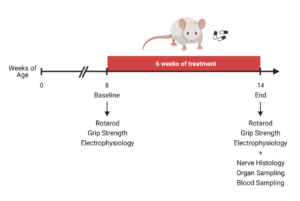New project will examine impact of two selective and potent drug candidates recently discovered by ORYZON
 The CMT Research Foundation is delighted to announce a new project with ORYZON, a clinical stage pharmaceutical company based in Spain.
The CMT Research Foundation is delighted to announce a new project with ORYZON, a clinical stage pharmaceutical company based in Spain.
Histone deacetylase (HDAC) inhibitors are a class of drugs approved for various cancer indications that also hold promise in neurodegenerative disease. In particular, for CMT it is thought that HDAC inhibitors that are selective for HDAC6 (HDAC6 inhibitors) may provide a therapeutic effect through enhancing axonal transport and/or lowering PMP22 levels. ORYZON has developed two drug candidate HDAC6 inhibitors with superior drug properties. This project will test these drug candidates in a mouse model of CMT1A, providing proof-of-concept evidence for further development of one or both candidates as a therapeutic for CMT1A.
CMT1A is caused by overexpression of PMP22, leading to demyelination followed by a secondary loss of axons in the peripheral nerves. Thus, approaches that lower PMP22 levels in the nerve and/or prevent axon degeneration may be effective treatments for CMT1A. HDAC6 inhibitors are thought to act on both pathways, and are being pursued by several groups as potential therapeutics for both Type 1 and Type 2 CMT.
Early attempts at this approach used HDAC6 inhibitors that relied on the presence of a hydroxamate group in the molecule. However, hydroxamate is now believed to be potentially toxic, causing genetic mutations in some cases. To avoid this problem, some groups including ORYZON are now pursuing HDAC6 inhibitor chemistry that does not rely on a hydroxamate group. ORYZON has recently completed a discovery program to identify selective and potent oxadiazole-based HDAC6 inhibitors, and they have discovered two drug candidates with superior on-target potency and selectivity for HDAC6 over other HDACs, along with good drug-like properties (e.g., oral availability, promising pharmacokinetics, etc.) Preliminary work by the company indicates that both candidates travel to and engage their target (HDAC6) in the peripheral nerves.
The experimental approach, illustrated below, is straightforward and in line with best practices in CMT research.

In addition to testing the effects of the drug candidates on strength and balance symptoms, the researchers will also examine the health of the axons and myelin in the peripheral nerves. If the project is successful, one or both of the drug candidates will be well-positione
